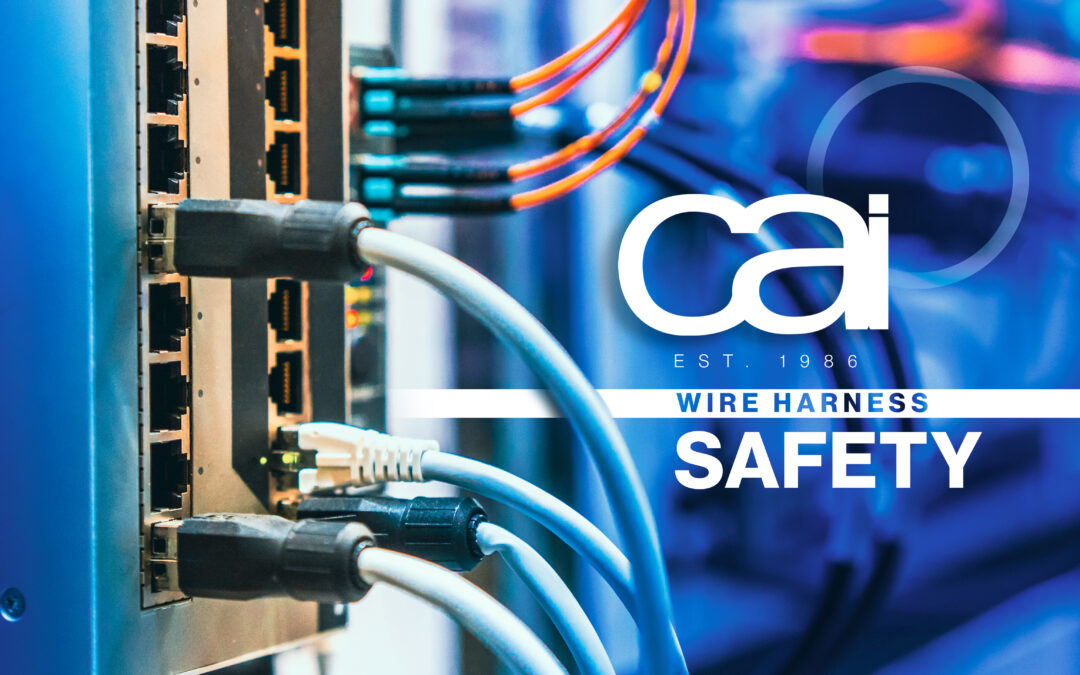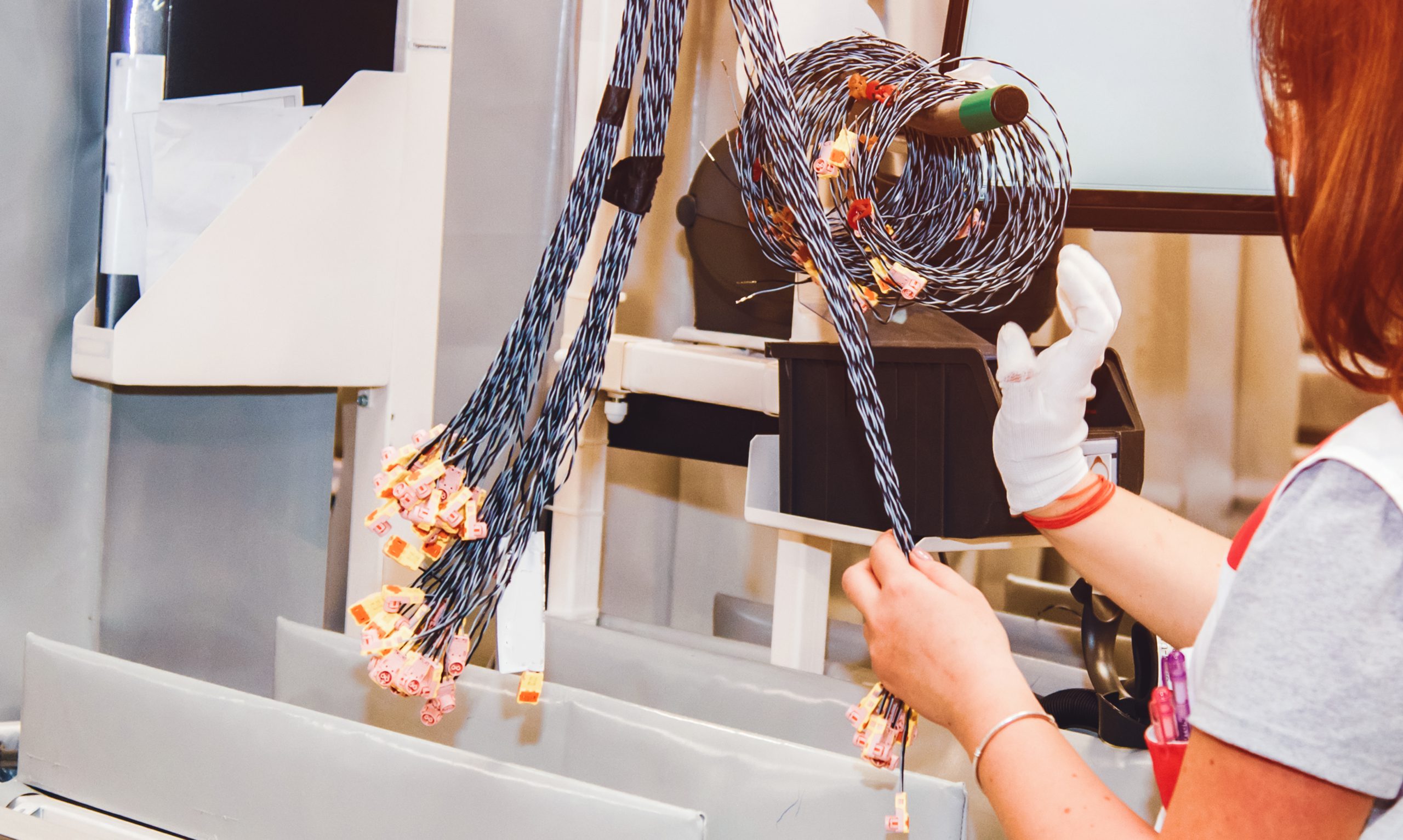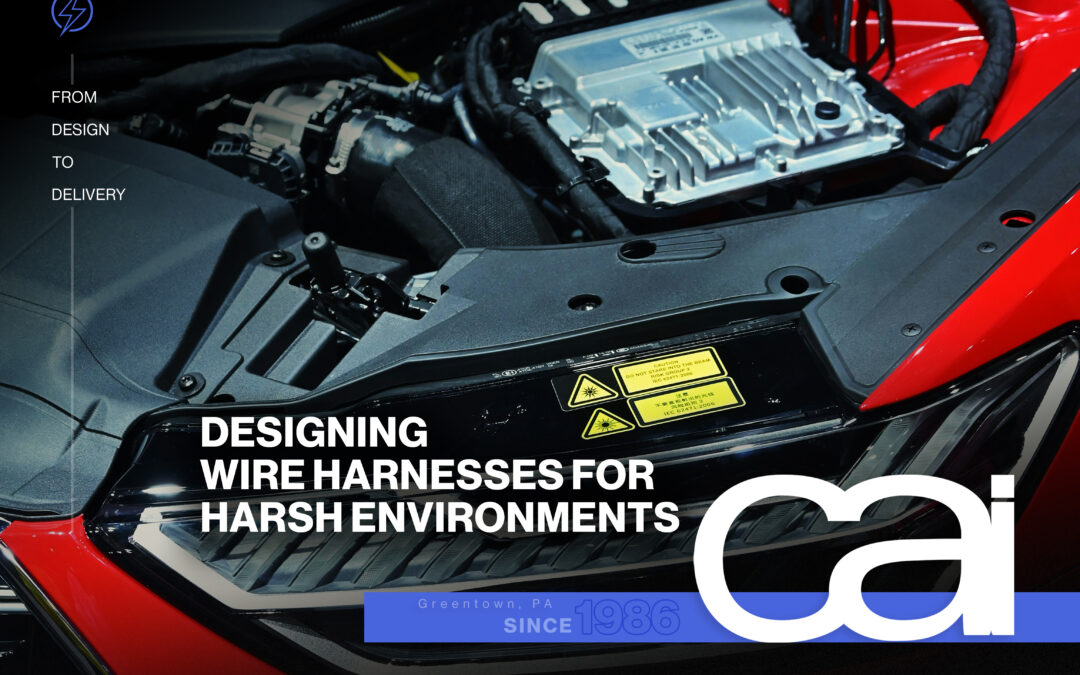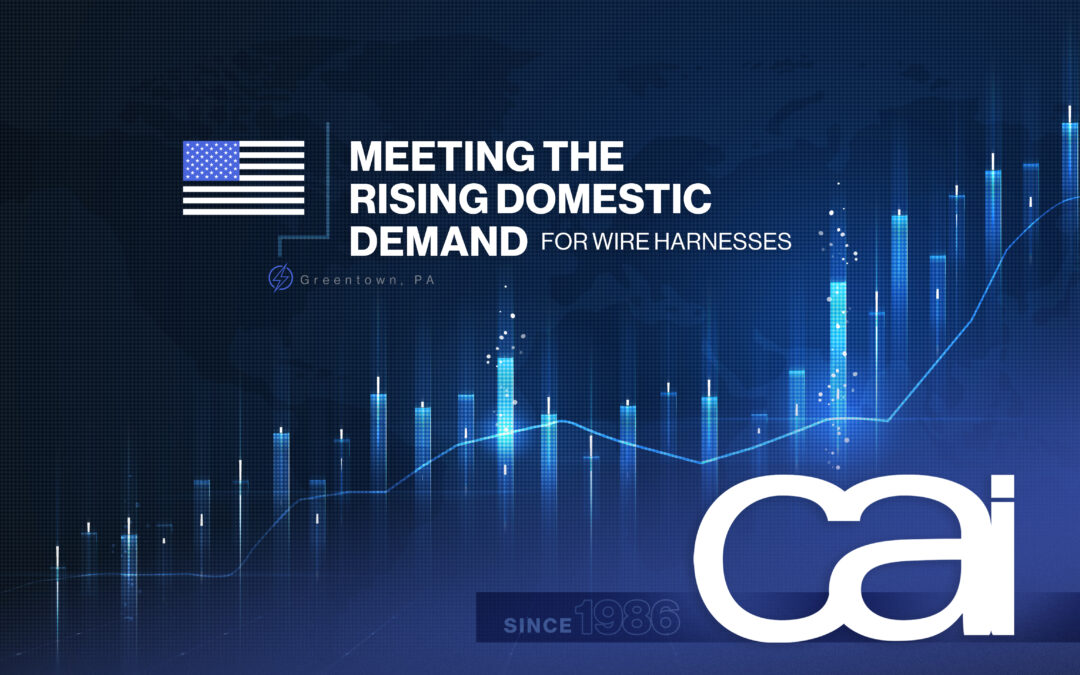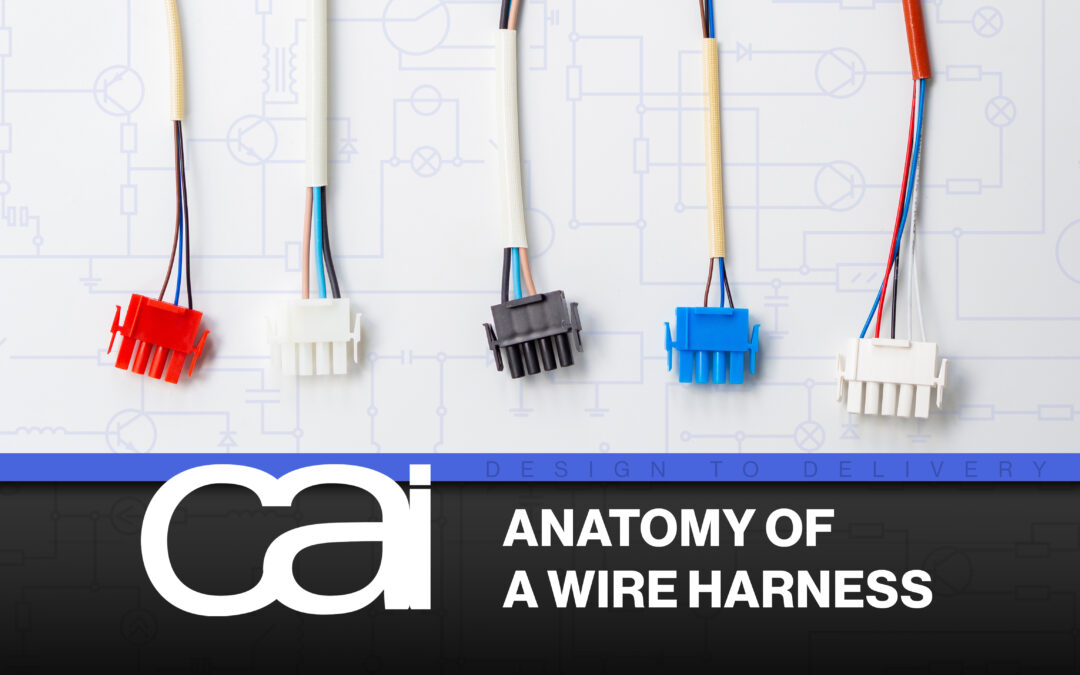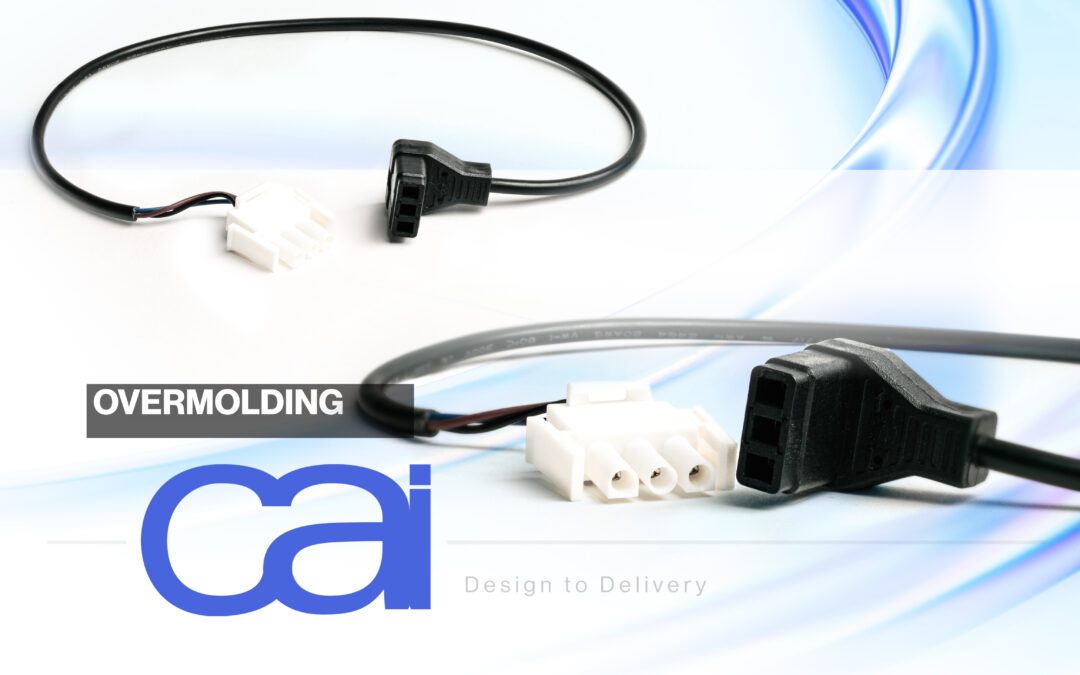How Experienced Manufacturers Fabricate High-Quality Custom Wire Harnesses
Carrying power and data to the appliances, machines and devices we use every day, wire harnesses play a vital role in our lives. But what exactly are they and how are they made?
A wire harness is a collection of electrical cables, wires and connectors bundled together and covered in a protective sheath to help optimize space and improve durability, safety, organization and appearance. Without a carefully designed and assembled wire harness, the electronic device it serves likely won’t perform as well and reliably as it should.
That’s why, when you need a wire harness built and customized for your specific application, it’s wise to turn to CAI – a trusted turnkey manufacturer who specializes in wire harness fabrication; has the know-how, tools and processes to handle the project from start to finish; and will deliver a high-quality product as timely and efficiently as possible.
From design to final testing, the manufacturer takes a series of actions to bring each client’s wire harness vision to life that can broken down into the following four key stages:
1. DESIGN
The first stage in any successful custom manufacturing project involves creating an effective strategy that maps out every process, resource and step needed to ensure optimal organization and performance from the finished product. Each wire harness application has unique geographical limitations, environmental factors and power demands to which the design must adhere.
The manufacturer considers all of the client’s specifications including wire lists, bill of materials, assembly drawings, testing specifications and detailed images of connectors and pin locations. For everything to go as efficiently and effectively as possible, the more detailed the information, the better. However, an experienced manufacturer can work from just about any starting point. In development, CAI has delivered solutions based solely on samples or even bar-nap sketches.
This is when engineers anticipate problems that may arise during regular operation, then make recommendations on the best design, components, materials and color coding for the harnesses intended use and future environment. Using a computer program like CAD, the manufacturer creates a precise schematic to guide assemblers throughout the production process. Detailing what parts to use and where to place them, the assembly board provides a full-size diagram of the wire harness that becomes a workbench during assembly.
2. PROTOTYPE
It’s important to find out how effective the design will be in its intended application before reproducing it on a larger scale. The best way to do this is by creating a functional prototype from the design so assemblers have a tangible version of the final product which they can test out in a real-life environment and share with the client.
They make sure the product will perform optimally by looking for and immediately addressing design flaws and possible obstacles that may impact the production phase. While it’s not always feasible or practical, prototyping helps avoid potential costly issues down the road, such as further downtime, wasted resources and even having to start from scratch in the design phase should the final product not live up to expectations.
For over 35 years, the experts at CAI have been creating custom wire harnesses for countless satisfied clients in dozens of industries across the globe. Contact CAI today with your unique wire harness needs.
3. PRODUCTION
Once the prototype is deemed successful, assemblers move on to production — the most time-consuming and intensive stage. Here, design specifications must be strictly met in order to maintain minimal error rates while meeting volume recruitments. Due to the intricacy and high customization involved, wire harness manufacturing is still largely a manual process, though automation is used for tasks such as cutting wires and soldering wire ends.
First, assemblers carefully measure, mark, and cut each individual wire to its precise length using a wire-cutting machine. Next, they strip away the insulation on each wire end and fit it with the appropriate terminal, crimping them together using an automated or handheld crimper. The wires and components are then installed on the assembly board, routed through any required connector housings or conduits, and bundled together using sleeves (heat shrink tubing), wraps, ties and/or tape to hold them in place.
4. TESTING
Post production, each wire harness goes through rigorous performance and safety testing using a variety of precision tools and software to ensure the product’s success when put into application. Manufacturers typically check electrical integrity using programmable, automatic multi-conductor testers.
Issues such as miswiring, loose connections, wrong wire gauge, failed components, and poor crimps can be found through continuity testing and resistance measurement. Short circuit testing can help discover crossed wires or an unwanted conductor path. Other tests can reveal faulty insulation, incorrect capacitance, and more.
After the wire harnesses pass final inspection and the volume is met, they are ready to be packaged and delivered to the client. An experienced manufacturer like CAI works smartly and efficiently every step of the way in order to deliver the highest quality wire harnesses fit to their exact specifications.
CAI ensures that your project runs smoothly from design to delivery, and that your product is just how you envisioned it. For expert guidance to bring your wire harness or cable assembly product to life, contact CAI today and we’ll help you get started.
